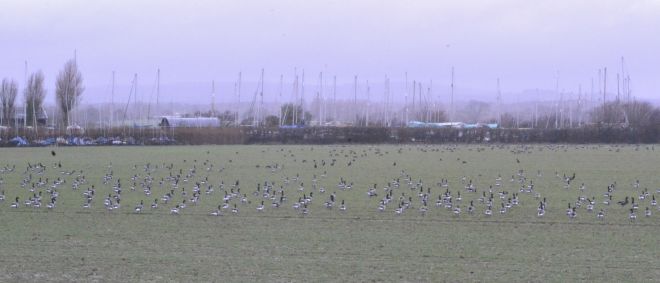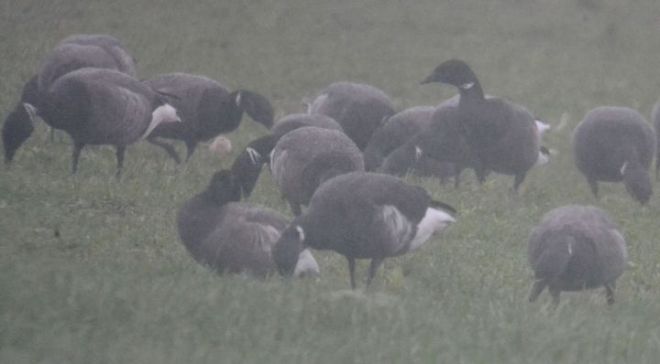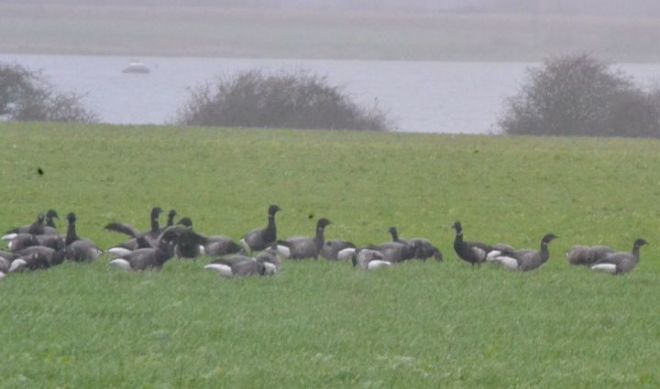I fancied an outing to the north Norfolk coast this holiday period, and chose a day that offered some calm and sunny respite from Atlantic weather. Having tracked what birds were about over several days I opted for Holme Dunes. Here the local winter specialities Twite and Horned Lark were being reported and Snow Bunting was a possibility. If time allowed I could also fit in another visit to the wintering Pallid Harrier, and maybe an Iceland Gull in King’s Lynn.
I approached Holme Dunes NNR from a car park outside Thornham (TF727443) around 10am. This stretch of fragile coastline, managed by the Norfolk Wildlife Trust, comprises a range of habitats: intertidal sands and mud, sand and shingle bars, saltmarsh, sand dunes, freshwater and salty pools and grazing marshes. Things felt like an uplifting spring day and there was a very pleasing light as I walked NW along the sea wall.
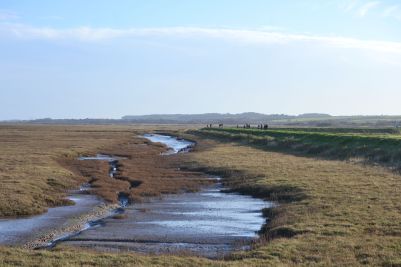
View back along the sea wall
A flock of 20 or so small passerines bobbed past that I suspected must be the Twite, then I caught up with them feeding low down in the salt marsh a little further on. Always restless and mobile, these winter coastal finches for me have lovely subtle tones and are far more attractive to actually behold than they look in field guides. A few other birders were already watching them, then several more people stopped as well.
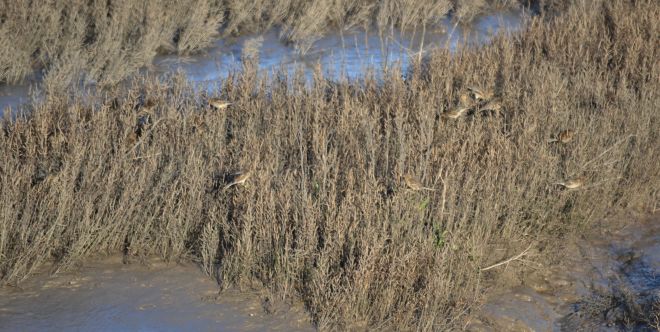
Feeding Twite flock
Everyone was heading out to the beach where three Horned Lark (or Shorelark) were said to be showing well. Northern breeders like the Twite, these distinctive yellow and black-faced larks had moved some way out by the time I caught up with the group observing them. I asked others to point them out at that distance, but then the birds flew in quite close again and like everyone else present I tracked them feeding busily on the ground for some time.
It was noticeable that the birders all kept to the edge of the dunes but three big lens photographers just had to go onto the beach, putting the larks up several times. Rather embarrassingly one of these recognised me from Oxfordshire. When I told him he wasn’t popular with the birders he just said he had been there first. They always have an answer. But the disturbance didn’t spoil what was my best ever experience of Horned Lark.
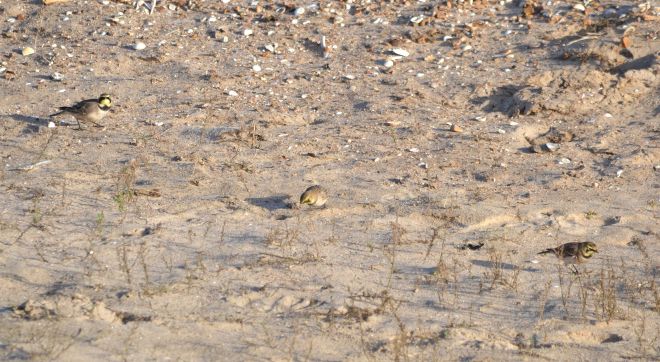
Horned Larks on the beach
After midday I headed back to the car park. Whereas the company had been mostly birders on the way out, the general public was now treading the sea wall in their droves and there was no longer any sign of the Twite. After buying a snack lunch in a village shop, I stopped to eat it 13 miles SW at the famed Wolferton Triangle on the off chance that a Golden Pheasant might choose to show itself. There had been sightings again in recent days but I wasn’t lucky during my brief visit.
It was now time to complete some unfinished business with Norfolk’s juvenile wintering Pallid Harrier. This raptor has relocated from Snettisham RSPB to a village Flitcham that is alarmingly on shooting land. I arrived mid-afternoon to find several birders patiently waiting by a gap in a hedge for the raptor to appear. It had not been reported today since 9:30am. I debated whether to move on and go for the Iceland Gull but decided the best chance of seeing the Harrier again would be when it came in to roost here.
After 3pm some birders gave up and went, leaving just four of us. Then the Pallid Harrier flew in and for the next 20 minutes put on a show of aerobatics around the landscape before us. I had experienced this bird distantly at Snettisham (see here) but this time could identify all the diagnostics: just four primaries, the neck boa (dark patch) and the generally orangey appearance in flight. The views here were superb.
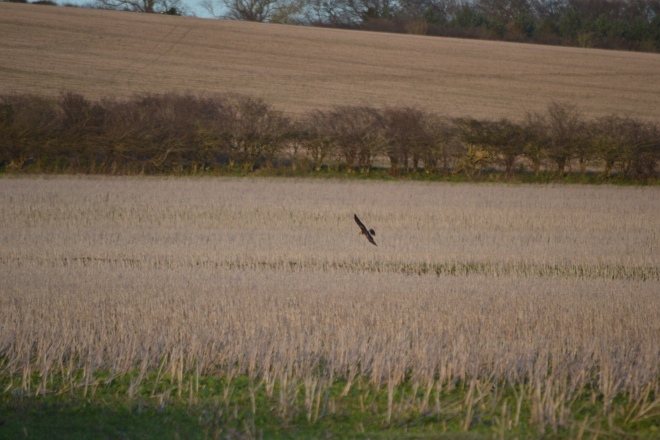
Pallid Harrier (juv)
At one point a Merlin, always a nice bird to see, flew in and interacted with the Harrier. Two Common Buzzard and a Sparrowhawk were also active. As I left site the local cattle man asked me what everyone was looking at. For fear of what he might say in the pub I didn’t name the Pallid Harrier, just saying it was a small raptor. Having heard of the Lincs (see here) Red-footed Falcon’s fate, I hope the unknowing juvenile visitor departs this shooting land soon. Over our three encounters it has provided excellent value and I have gained a better understanding and views of this bird on each occasion.




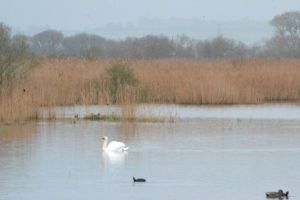
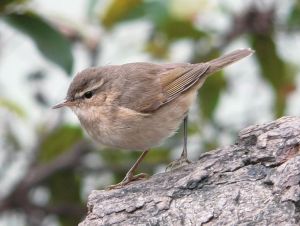
![wp9607fbef_05_06[1]](https://ramblingsnscribblings.files.wordpress.com/2015/12/wp9607fbef_05_061.jpg?w=660)
